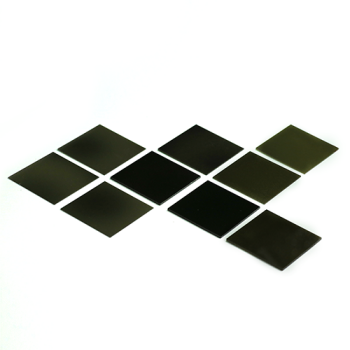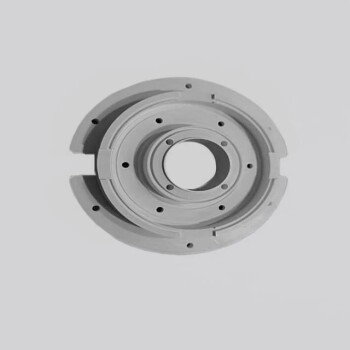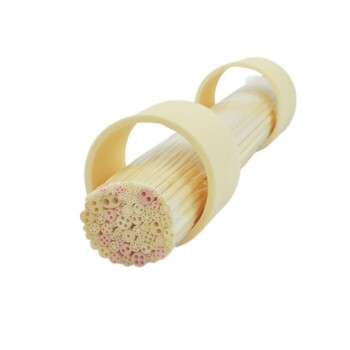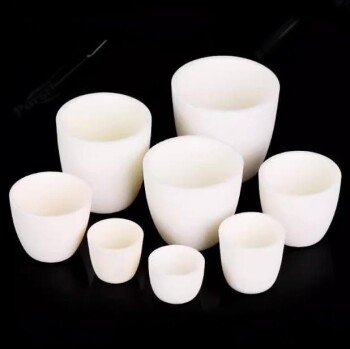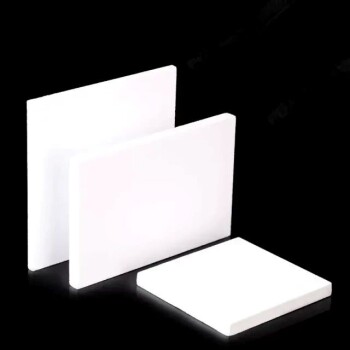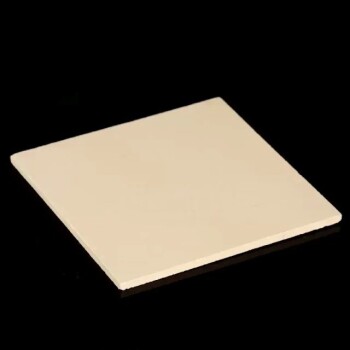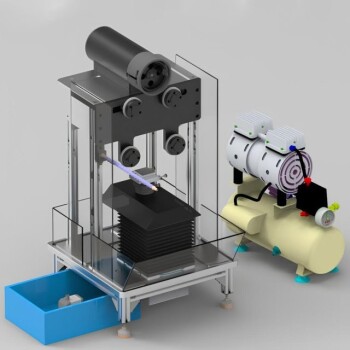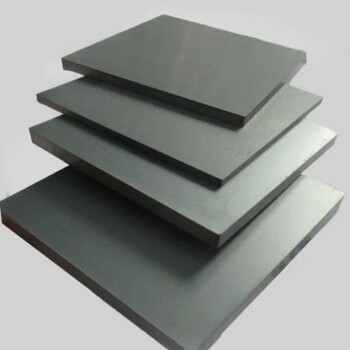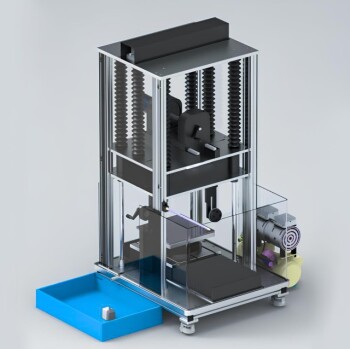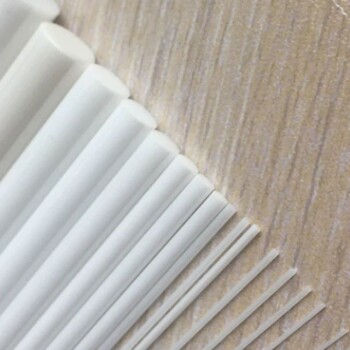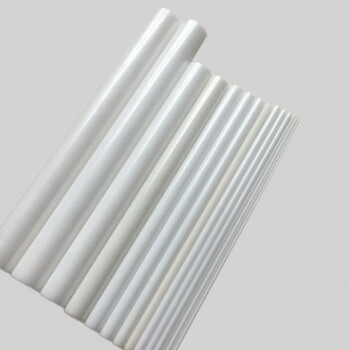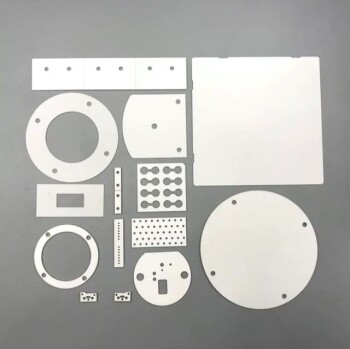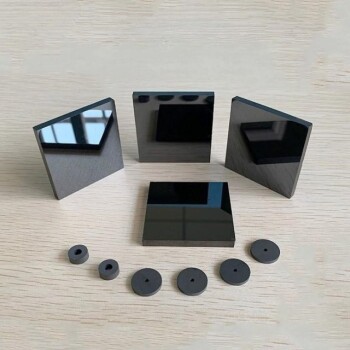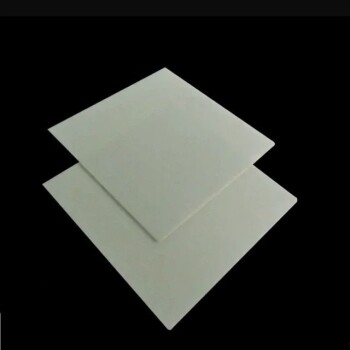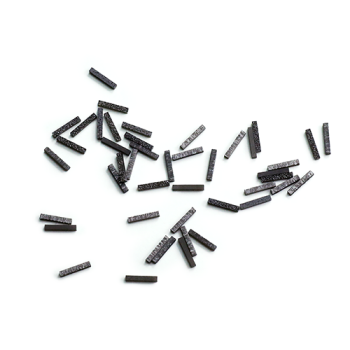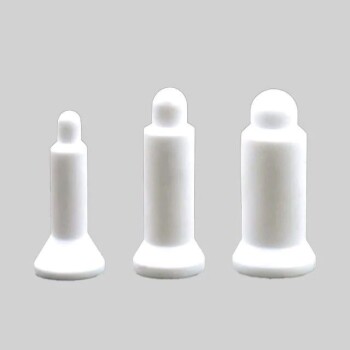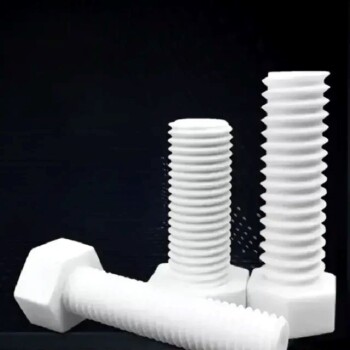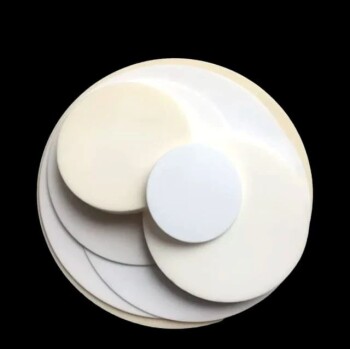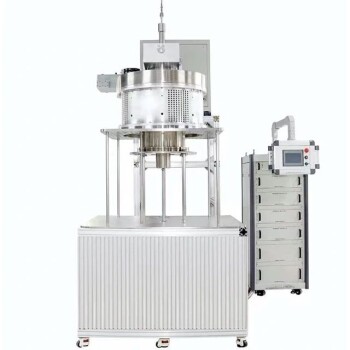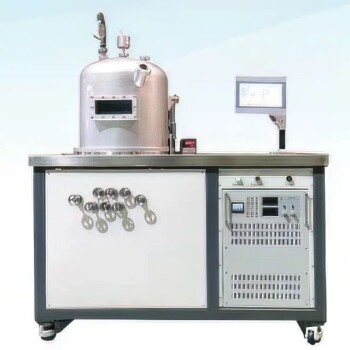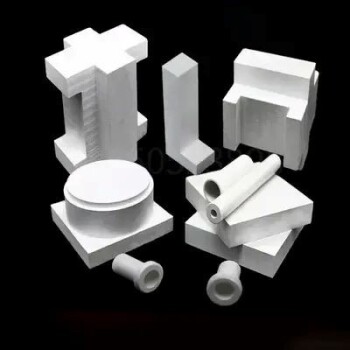새로운 엔지니어링 세라믹 소개
특성 및 응용 분야
새로운 엔지니어링 세라믹은 고온, 마모, 부식, 침식, 산화에 대한 탁월한 저항성이 특징입니다. 이러한 소재는 높은 탄성 계수를 자랑하며 높은 온도에서도 상당한 강도를 유지합니다. 이러한 특성의 조합은 기존의 금속 소재와 유기 폴리머가 흔들리는 환경에서 없어서는 안 될 필수 요소입니다.
| 속성 | 설명 |
|---|---|
| 높은 온도 저항 | 극한의 온도에서도 성능 저하 없이 견딜 수 있습니다. |
| 내마모성 | 시간이 지남에 따라 마모 및 기계적 마모에 강합니다. |
| 부식 저항 | 부식성 물질의 화학적 공격에 영향을 받지 않습니다. |
| 침식 저항 | 유체 또는 기체의 흐름으로 인한 물리적 제거를 방지합니다. |
| 산화 저항 | 산화를 방지하여 산화 조건에서 구조적 무결성을 유지합니다. |
이러한 세라믹은 특히 항공우주, 자동차 및 산업 제조와 같은 분야에서 새로운 기술을 발전시키는 데 중추적인 역할을 합니다. 예를 들어 항공우주 분야에서는 고온 강도와 산화 저항성이 중요한 터빈 블레이드와 엔진 부품에 사용됩니다. 자동차에서는 내마모성과 내식성을 활용하여 브레이크와 엔진 부품의 성능을 향상시킵니다.
또한 탄성 계수가 높아 상당한 기계적 응력에도 변형 없이 견딜 수 있어 정밀도와 내구성이 요구되는 분야에 이상적입니다. 이러한 다용도성 덕분에 엔지니어링 세라믹은 차세대 기술 개발의 초석으로 자리매김하여 기존 소재로는 달성할 수 없었던 혁신을 가능하게 합니다.
금속 소재와의 비교
엔지니어링 세라믹 소재는 특히 까다로운 산업 분야에서 기존 금속 소재에 대한 강력한 대안을 제공합니다. 세라믹의 가장 중요한 장점 중 하나는 다음과 같습니다. 높은 내열성 금속이 일반적으로 부드러워지거나 변형되는 온도에서도 구조적 무결성과 기계적 특성을 유지할 수 있다는 점입니다. 따라서 세라믹은 용광로, 엔진, 가스 터빈과 같은 고온 환경에서 사용하기에 이상적입니다.
다음과 같은 측면에서 내식성 측면에서 세라믹은 특히 열악한 화학 환경에서 많은 금속 합금보다 뛰어난 성능을 발휘합니다. 예를 들어 스테인리스 스틸은 산성 조건에서 부식될 수 있지만, 세라믹과 같은 알루미나 세라믹 및 실리콘 카바이드 세라믹 은 영향을 받지 않습니다. 이 특성은 재료가 부식성 화학물질과 고온에 동시에 노출되는 화학 공정에서 특히 유용합니다.

높은 경도 높은 경도 세라믹의 또 다른 중요한 장점입니다. 질화규소 및 산화지르코늄과 같은 세라믹은 경화강과 비슷하거나 그 이상의 경도 수준을 나타내므로 마모와 마모에 대한 저항성이 뛰어납니다. 따라서 절삭 공구, 베어링 및 기타 기계적 스트레스가 심한 상황에서 내구성이 요구되는 부품에 적합합니다.
또한 세라믹은 높은 탄성 계수 이 높기 때문에 하중에 따른 변형에 잘 견딥니다. 이러한 특성은 항공우주 부품 및 정밀 기계와 같이 강성과 치수 안정성이 가장 중요한 응용 분야에서 매우 중요합니다.
내마모성 은 세라믹이 뛰어난 또 다른 분야입니다. 세라믹은 장기간에 걸친 마찰과 침식을 큰 성능 저하 없이 견딜 수 있기 때문에 기어나 씰과 같이 지속적인 움직임과 접촉이 발생하는 기계 부품에 사용하기에 이상적입니다.
세라믹은 또한 우수한 열 충격 저항 이 뛰어나 급격한 온도 변화에도 균열이나 고장 없이 견딜 수 있습니다. 이는 제트 엔진의 열 차단 코팅과 같이 급격한 온도 변동이 빈번한 분야에서 특히 중요합니다.
마지막으로 비산화 세라믹은 산화물과 스케일을 형성하는 많은 금속 합금과 달리 고온에서 산소에 노출되어도 부식되거나 성능이 저하되지 않습니다. 따라서 세라믹은 고온의 산화 환경에서 선호되는 소재입니다.
이러한 장점으로 인해 엔지니어링 세라믹 소재는 다양한 분야에서 고가의 초고합금강을 대체하고 있습니다. 극한 조건에서의 뛰어난 성능은 부품의 효율성과 수명을 향상시킬 뿐만 아니라 유지보수 비용과 가동 중단 시간을 줄여줍니다.
엔지니어링 세라믹의 종류
산화물 세라믹 재료
산화물 세라믹에는 다음과 같은 다양한 소재가 포함됩니다. 알루미나 , 산화 마그네슘, 산화 베릴륨, 산화 지르코늄, 산화 주석, 이산화 규소 및 멀라이트 세라믹을 포함합니다. 이러한 소재는 특히 고온 조건에서 탁월한 화학적 안정성과 우수한 산화 저항성으로 잘 알려져 있습니다.
비산화물 세라믹에 비해 산화물 세라믹은 화학적 안정성이 높고 환경적 분해에 더 강합니다. 따라서 극한의 온도와 부식성 환경에 노출될 수밖에 없는 애플리케이션에 특히 적합합니다. 예를 들어 알루미나 는 높은 유전체 강도와 열 안정성으로 인해 고온 용광로와 전기 애플리케이션의 절연체로 널리 사용됩니다.

또한 일반적으로 고온에서 소결하는 산화물 세라믹의 생산 공정은 재료의 미세 구조를 정밀하게 제어할 수 있습니다. 이러한 제어를 통해 최종 제품은 고성능 절삭 공구부터 고급 구조 부품에 이르기까지 다양한 산업 응용 분야의 엄격한 요구 사항을 충족할 수 있습니다.
아래 표는 몇 가지 일반적인 산화물 세라믹과 그 주요 특성에 대한 간략한 개요를 제공합니다:
| 세라믹 소재 | 주요 특성 | 응용 분야 |
|---|---|---|
| 알루미나(Al₂O₃) | 높은 경도, 열 안정성 | 절삭 공구, 용광로 라이닝 |
| 산화 마그네슘 | 뛰어난 열 전도성 | 전기 절연체, 내화물 |
| 산화 지르코늄 | 높은 인성, 내식성 | 의료용 임플란트, 절삭 공구 |
| 이산화 규소 | 낮은 열팽창, 높은 융점 | 유리, 광섬유 |
| 멀라이트 | 높은 열충격 저항성 | 내화 라이닝, 용광로 부품 |
이러한 특성 덕분에 산화물 세라믹은 신뢰성과 내구성이 가장 중요한 산업, 특히 열악한 작동 환경에서 없어서는 안 될 필수 요소입니다.
비산화 세라믹 소재
비산화 세라믹에는 질화물, 탄화물, 규화물, 붕화물 등 다양한 소재가 포함됩니다. 이 중 실리콘 질화물(Si₃N₄) , 실리콘 카바이드(SiC) 및 질화붕소(BN) 은 뛰어난 열적 특성으로 인해 두드러집니다. 이러한 소재는 다음과 같은 특성으로 유명합니다. 높은 열전도율 가 높아 열을 효율적으로 방출할 수 있으며, 열팽창이 낮은 열팽창 으로 열 스트레스와 변형을 최소화합니다. 또한 다음과 같은 특징이 있습니다. 뛰어난 열 충격 저항 이 뛰어나 급격한 온도 변화가 빈번한 환경에서 사용하기에 이상적입니다.
| 재질 | 열전도율(W/m-K) | 열팽창 계수(10-⁶/K) | 열 충격 저항 |
|---|---|---|---|
| 실리콘 질화물 | 20-170 | 2.7-3.2 | High |
| 실리콘 카바이드 | 120-270 | 4.0-4.5 | 매우 높음 |
| 질화 붕소 | 30-500 | 4.5-5.5 | 높음 |
이러한 비산화 세라믹의 우수한 열적 특성은 효율적인 포논 수송을 촉진하고 열팽창을 최소화하는 원자 구조에 기인합니다. 이러한 특성의 조합으로 인해 내구성과 신뢰성이 가장 중요한 항공우주, 자동차, 산업 기계와 같은 고온 응용 분야에서 매우 유용합니다.
다공성 세라믹 소재의 응용 분야
폼 세라믹 필터
복잡한 구조와 다양한 용도로 잘 알려진 다공성 세라믹은 현대 산업 공정에서 중추적인 역할을 담당합니다. 이러한 소재는 높은 수준의 다공성을 갖도록 설계되어 여과, 분리 및 확산과 같은 중요한 영역에서 성능을 향상시킬 수 있습니다. 다공성 세라믹은 열적 안정성과 화학적 불활성을 포함한 고유한 특성으로 인해 기존 소재가 불안정한 환경에서 필수 불가결한 소재입니다.
다공성 세라믹의 가장 중요한 응용 분야 중 하나는 폼 세라믹 필터로 사용되는 금속 정화 분야입니다. 이 필터는 용융 금속에서 불순물과 내포물을 제거하여 최종 제품의 전반적인 품질과 성능을 개선하도록 설계되었습니다. 금속 정화 공정에서 폼 세라믹 필터의 사용은 재료 순도를 높이고 기계적 특성을 향상시켜야 할 필요성으로 인해 증가하고 있습니다.

| 적용 분야 | 이점 |
|---|---|
| 여과 | 용융 금속에서 불순물 및 내포물을 효과적으로 제거합니다. |
| 분리 | 산업 공정에서 여러 단계의 효율적인 분리 |
| 충전 | 고온 환경에서 구조적 지지와 단열을 제공합니다. |
| 확산 | 가스 또는 액체의 확산을 제어하여 반응 속도를 향상시킵니다. |
| 촉매 | 촉매 반응을 지원하여 효율성과 선택성을 향상시킵니다. |
| 생물학적 효소 운반체 | 생명공학 응용 분야에서 중요한 효소 활성과 안정성을 향상시킵니다. |
금속 정제에 폼 세라믹 필터의 채택이 증가하고 있다는 것은 재료 성능을 개선하는 데 있어 폼 세라믹 필터의 효능을 입증하는 증거입니다. 이러한 필터는 유해한 불순물을 제거함으로써 기계적 특성이 우수하고 내구성이 뛰어나며 환경 스트레스에 대한 내성이 강화된 금속을 생산하는 데 기여합니다. 산업계가 소재 성능의 한계를 계속 넓혀감에 따라 금속 정화에서 폼 세라믹 필터의 역할은 더욱 중요해질 것입니다.
절삭 공구 재료 개발
고속 강철
고속강(HSS)은 비철금속에서 고온 합금에 이르기까지 광범위한 재료를 가공할 수 있는 다양하고 복잡한 공구를 제조할 수 있는 다용도 소재로 각광받고 있습니다. 이 범주의 강재는 범용 고속강, 고성능 고속강, 분말 야금 고속강의 세 가지 주요 유형으로 다시 나뉩니다.
- 범용 고속강: 이 유형은 경도와 인성의 균형으로 인해 가장 일반적으로 사용되는 유형으로 다양한 절삭 응용 분야에 적합합니다.
- 고성능 고속강: 보다 까다로운 작업을 위해 설계된 이 유형은 향상된 내마모성과 적색 경도를 제공하여 고온에서도 절삭 성능을 유지할 수 있습니다.
- 분말 야금 고속강: 첨단 분말 야금 기술을 활용하는 이 재종은 우수한 균질성과 미세한 카바이드 분포를 제공하여 기존 고속강에 비해 인성 및 내마모성이 향상되었습니다.

다양한 가공 환경에서 고속강의 적응성은 절삭 공구 소재 개발의 초석이 되어 세라믹 및 초경질 소재의 발전을 보완합니다.
초경합금
초경합금은 분말 야금을 통해 제조된 최첨단 소재로, 내화성 금속 탄화물과 금속 바인더를 결합한 것입니다. 이 독특한 구성은 초경합금에 고속 강철을 훨씬 능가하는 탁월한 특성을 부여합니다. 상온에서 초경합금은 타의 추종을 불허하는 경도와 절삭 속도를 나타내므로 고성능 가공 분야에 없어서는 안 될 필수 소재입니다.
가장 일반적인 초경합금 유형에는 텅스텐과 코발트, 텅스텐, 티타늄, 코발트 텅스텐 카바이드를 기반으로 하는 초경합금이 있습니다. 각 변형은 특정 산업 요구 사항에 맞는 뚜렷한 이점을 제공합니다. 예를 들어 텅스텐 카바이드-코발트(WC-Co) 합금은 높은 인성과 내마모성으로 잘 알려져 있으며, 티타늄 카바이드 기반 합금은 우수한 경도와 열 안정성을 제공합니다.
| 유형 | 주요 속성 | 응용 분야 |
|---|---|---|
| 텅스텐 카바이드-코발트(WC-Co) | 높은 인성, 내마모성 | 채굴 공구, 금속 절삭, 스탬핑 금형 |
| 텅스텐-티타늄 카바이드(WC-TiC-Co) | 강화된 경도, 열 안정성 | 고속 가공, 절삭 공구 |
| 텅스텐-티타늄-탄탈탄화물(WC-TiC-TaC-Co) | 균형 잡힌 경도와 인성 | 항공우주 부품, 고정밀 가공 |
초경합금의 우수한 성능은 단순히 기계적 특성에만 국한되지 않습니다. 고온 및 마모 환경과 같은 극한의 조건에서도 무결성을 유지하는 능력 덕분에 자동차에서 항공우주에 이르는 다양한 산업 분야에서 중요한 소재로 자리매김하고 있습니다. 이러한 다용도성 덕분에 초경합금은 최첨단 기술 개발의 초석이 되고 있습니다.
세라믹 절삭 공구
세라믹 절삭 공구는 탁월한 경도와 내마모성이 뛰어나 초경 공구보다 훨씬 빠른 절삭 속도로 작동할 수 있습니다. 특히 세라믹 공구는 카바이드 공구의 3배에서 10배에 이르는 속도로 작동할 수 있어 고속 가공 작업에 없어서는 안 될 필수 요소입니다.
고속 절삭 분야에서 세라믹 공구는 높은 온도에서도 선명도와 구조적 무결성을 유지하는 능력이 뛰어나 정밀한 절삭과 공구 수명 연장에 매우 중요합니다. 또한 내마모성이 뛰어나 하드 절삭 시 발생하는 연마력을 견딜 수 있어 공구의 내구성과 효율성이 더욱 향상됩니다.
세라믹 공구는 냉각수나 윤활유가 없어 건조한 조건에서 안정적으로 작동할 수 있는 재료가 필요한 건식 절삭 공정에도 점점 더 선호되고 있습니다. 경화강 및 복합재와 같이 가공하기 어려운 소재를 절삭할 수 있는 능력은 까다로운 가공 시나리오에서 다목적성과 견고함을 강조합니다.
| 특징 | 세라믹 공구 | 초경 공구 |
|---|---|---|
| 절삭 속도 | 3~10배 더 높음 | 표준 |
| 경도 | 탁월한 | 높음 |
| 내마모성 | 우수 | 양호 |
| 적용 분야 | 고속, 건조, 단단하고 가공하기 어려운 소재 | 다양한 가공 작업 |
세라믹 절삭 공구는 이러한 까다로운 환경에서도 뛰어난 성능을 발휘하기 때문에 효율적이고 고정밀 가공이 가장 중요한 산업 전반에 걸쳐 널리 채택되고 있습니다.
초경도 절삭 공구 재료
다이아몬드 및 입방정질화붕소(CBN)와 같은 초경 절삭 공구 재료는 탁월한 특성으로 인해 가공 산업에 혁명을 일으키고 있습니다. 이러한 소재는 탁월한 고온 경도, 내마모성 및 열화학적 안정성을 제공하여 고경도 소재의 절삭 및 가공에 없어서는 안 될 필수 요소입니다.
이러한 초경도 소재의 주요 장점 중 하나는 고온에서도 높은 경도를 유지할 수 있다는 점입니다. 이는 기존 소재가 빠르게 성능이 저하되는 고속 가공 작업에서 매우 중요합니다. 예를 들어, 극한의 경도로 잘 알려진 다이아몬드는 고속 절삭 공정에서 발생하는 강한 열에도 그 효과를 유지합니다. 마찬가지로 높은 열전도율과 화학적 불활성을 지닌 CBN은 까다로운 환경에서도 절삭 공구의 날카로움과 기능을 유지할 수 있도록 해줍니다.

초경질 소재는 열적 특성 외에도 뛰어난 내마모성을 자랑합니다. 이러한 특성은 공구가 지속적으로 높은 응력 조건에 노출되는 산업에서 특히 중요합니다. 연마 마모를 견디고 칩핑을 방지하는 능력은 절삭 공구의 수명을 크게 연장하여 유지보수 비용과 가동 중단 시간을 줄여줍니다.
또한 이러한 소재의 열화학적 안정성은 가공되는 소재와 반응하지 않아 공구와 공작물의 무결성을 손상시킬 수 있는 유해한 화합물의 형성을 방지합니다. 이러한 안정성은 티타늄 합금이나 경화강과 같은 반응성 소재를 가공할 때 특히 유용합니다.
전반적으로 초경 절삭 공구 재질을 최신 가공 공정에 통합하는 것은 이 분야에서 상당한 발전을 의미합니다. 고온 경도, 내마모성 및 열화학적 안정성의 독특한 조합으로 인해 가장 까다로운 가공 작업을 처리하는 데 선호되는 선택입니다.
코팅 공구
코팅 공구는 내마모성이 뛰어난 내화 화합물을 카바이드 또는 고속강 기판에 하나 이상의 층으로 도포하여 절삭 공구 기술의 획기적인 발전을 이룩한 것입니다. 질화 티타늄(TiN), 티타늄 카바이드(TiC) 또는 알루미늄 산화물(Al₂O₃)과 같은 재료로 만들어지는 이러한 코팅은 몇 가지 중요한 방식으로 기본 공구 재료의 성능을 향상시킵니다.
첫째, 이러한 코팅을 추가하면 가공 효율이 크게 향상됩니다. 코팅의 내마모성이 향상되어 절삭 속도가 빨라지고 공구 마모가 감소하여 가공 공정의 전반적인 생산성이 향상됩니다. 이는 공구가 극한의 조건에 노출되는 고속 가공 작업에서 특히 유용합니다.
둘째, 코팅된 공구는 가공 정확도 향상에 기여합니다. 보호층은 공구 변형과 마모를 최소화하여 가공 부품의 치수 부정확성 가능성을 줄여줍니다. 이러한 정밀도는 항공우주 및 자동차 제조와 같이 공차 수준을 엄격하게 관리해야 하는 산업에서 매우 중요합니다.
또한 코팅 공구의 수명이 연장된다는 점도 주목할 만한 장점입니다. 코팅에 사용되는 내화 화합물은 고온과 가혹한 절삭 조건을 견딜 수 있도록 설계되어 공구 수명이 길어지고 교체 횟수가 줄어듭니다. 이러한 수명은 가동 중단 시간을 줄여줄 뿐만 아니라 전체 툴링 비용도 낮춰줍니다.
마지막으로, 코팅 공구를 사용하면 경제적 이점이 상당합니다. 코팅 공구는 공구 수명을 연장하고 가공 효율을 개선함으로써 가공 작업의 총 비용을 절감하는 데 도움이 됩니다. 이러한 비용 효율성으로 인해 코팅 공구는 생산 공정을 최적화하려는 제조업체에게 매력적인 옵션입니다.
요약하면, 코팅 공구는 비코팅 공구와 비교할 수 없는 향상된 성능, 정확성, 수명, 비용 효율성을 제공하는 절삭 공구 기술 분야의 판도를 바꾸는 제품입니다.
관련 제품
- 정밀 가공용 CVD 다이아몬드 절삭 공구 블랭크
- 내마모성 응용 분야를 위한 엔지니어링 고급 세라믹 산화알루미늄 Al2O3 세라믹 와셔
- 맞춤형 질화붕소(BN) 세라믹 부품
- 엔지니어링 첨단 세라믹용 고온 산화알루미늄(Al2O3) 보호관
- 엔지니어링 첨단 세라믹용 아크형 알루미나 세라믹 도가니 고온 내성

